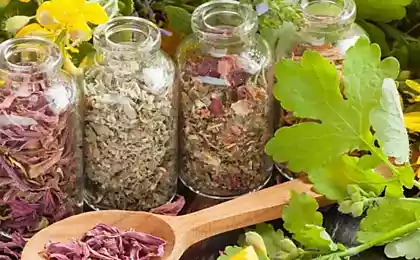183
How to cook portulac
Many gardeners are familiar with such a plant as Portulac. You may not know its name, but you certainly saw it in the garden, mercilessly fighting it like a weed.
I had never imagined before that a plant that I had long considered a weed could, and should, be included in the plant. diet!

Someone considers Portulac a weed, the shoots of which, not weeded in time, can live about 25 years. But it's actually a medicinal herb.
Portulac has been known to people since time immemorial. Ancient Egyptians, Greeks and Romans willingly consumed it as food. Hippocrates, Pliny and other physicians and scientists have used this plant to treatmentIn the Middle Ages, the Arabs considered it blessed.

Portulac contains more omega-3 fatty acids than any other plant, and can even contain up to 8.5 mg per gram of weight.
Vitamins A, B, C and E in portulac are six times more than in spinach. Carotene is seven times more than found in carrots, and there is also magnesium, calcium, potassium, folic acid, iron and lithium. By the way, the concentration of linolenic acid in portulac is several times higher than in spinach!

Portulac garden Portulac tastes like something between spinach and sorrel. Its taste is less sour than that of sorrel, but at the same time the plant has a fresh aroma and a light tartness. The leaves of the garden portulac are fleshy and juicy.
Young leaves and stems are used for food raw and boiled. From them cook spicy salads, soups, mashed potatoes, seasonings for meat dishes. For the winter, salt and marinate, using capers as a substitute.
The editorial board. "Site" Today he will tell you how to cook. purple. Awesome, who would have thought it was so delicious and useful!

The ingredients

Preparation
Alas, cancer is one of the most common diseases today, and even the minimum amount of anticarcinogens in the composition of consumed products should not be ignored. Vitamins A and C, contained in Portulac in sufficient quantities, are good antioxidants. Betacyanin and betaxanthin help block free radicals, preventing cells from regenerating.
As you can see, the useful properties of Portalac are difficult to overestimate! However, despite the huge list of useful properties, portulac has a number of contraindications for use. First of all, it can not be consumed in large quantities, no more than 200 g per day. Hypertensives and persons with a tendency to seizures are recommended to completely abandon the use of this plant.
Have you ever eaten a dish with portulac? If you liked this article, share it. portulac with your friends!
I had never imagined before that a plant that I had long considered a weed could, and should, be included in the plant. diet!

Someone considers Portulac a weed, the shoots of which, not weeded in time, can live about 25 years. But it's actually a medicinal herb.
Portulac has been known to people since time immemorial. Ancient Egyptians, Greeks and Romans willingly consumed it as food. Hippocrates, Pliny and other physicians and scientists have used this plant to treatmentIn the Middle Ages, the Arabs considered it blessed.

Portulac contains more omega-3 fatty acids than any other plant, and can even contain up to 8.5 mg per gram of weight.
Vitamins A, B, C and E in portulac are six times more than in spinach. Carotene is seven times more than found in carrots, and there is also magnesium, calcium, potassium, folic acid, iron and lithium. By the way, the concentration of linolenic acid in portulac is several times higher than in spinach!

Portulac garden Portulac tastes like something between spinach and sorrel. Its taste is less sour than that of sorrel, but at the same time the plant has a fresh aroma and a light tartness. The leaves of the garden portulac are fleshy and juicy.
Young leaves and stems are used for food raw and boiled. From them cook spicy salads, soups, mashed potatoes, seasonings for meat dishes. For the winter, salt and marinate, using capers as a substitute.
The editorial board. "Site" Today he will tell you how to cook. purple. Awesome, who would have thought it was so delicious and useful!

The ingredients
- 250-300g Portulac
- 4-5 tbsp natural yogurt or sour cream
- 1 tbsp vegetable oil
- 2-3 cloves of garlic
- salt

Preparation
- Wash and dry the portulac a little on a paper towel. Put the portulac in a pot of boiling water and boil for about 30 seconds after boiling. In volume, the portulac will decrease.

- Throw the boiled portulac on a sieve and let it cool a little.

- To prepare a salad dressing in a convenient container, mix natural yogurt (it can be replaced with sour cream) and vegetable oil. Finely grind the garlic and also add it to the gas station. Stir it up carefully.

- Put the portulac in a deep bowl, salty and fill with gas. Stir it well.

- That's it, lettuce is ready. Bon appetit!

Alas, cancer is one of the most common diseases today, and even the minimum amount of anticarcinogens in the composition of consumed products should not be ignored. Vitamins A and C, contained in Portulac in sufficient quantities, are good antioxidants. Betacyanin and betaxanthin help block free radicals, preventing cells from regenerating.
As you can see, the useful properties of Portalac are difficult to overestimate! However, despite the huge list of useful properties, portulac has a number of contraindications for use. First of all, it can not be consumed in large quantities, no more than 200 g per day. Hypertensives and persons with a tendency to seizures are recommended to completely abandon the use of this plant.
Have you ever eaten a dish with portulac? If you liked this article, share it. portulac with your friends!

























